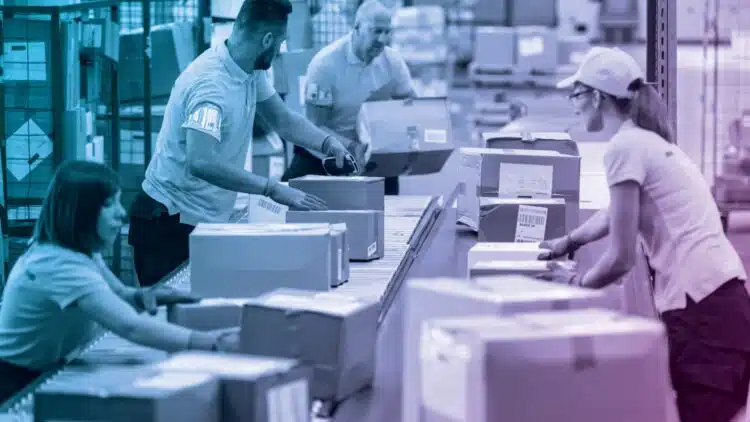Track and trace has been the holy grail for shippers and carriers going back decades. It was a black hole that defied a practical and straightforward remedy; one where the most popular solution was calling the driver every 30 minutes to ask where they—and your freight—was. That was after cell phones became ubiquitous.
Some would argue that even today, an effective solution providing accurate, complete, and timely visibility—where goods are, how fast products are moving, when they will arrive, and how much it costs—all remains a problem.
In many cases, they would be correct. The challenge of track and trace has become particularly vexing as technology platforms and the data they generate have proliferated. Today, visibility systems are fed by a multitude of platforms with various acronyms – ERP, SCP, WMS, TMS, SCE, AP, AR. Not to mention trucking, freight-forwarding, drayage, logistics, and freight audit systems. It’s yet another example of being data-rich and intelligence-poor. You have all this data, but little to no knowledge of what it means or how to use it to improve your business.
The answer requires us to redefine what track and trace—visibility, as we now call it—really means. It starts by understanding three things your track and trace platform is not telling you.
Fortune 500 Manufacturing and Distribution Company Leverages Visibility into 400 Locations to Save Big
Waiting a month or more to discover 30% of your shipments last month went to the spot market and cost you 40% more because your qualified core carriers are rejecting 25% of your tenders does you no good.
1. Your track and trace is limiting proactivity.
In today’s mobile, GPS-connected world, it’s easy to find out where a shipment is. Query the driver’s smartphone or a truck’s ELD telematics, and find out the shipment’s location within minutes and feet. However, what does that do for you? Also, how does that help fix a problem?
Real visibility in today’s e-commerce driven world—receiving and fulfilling the order today, scheduling and tendering the pickup, delivering it on time tomorrow, and accurately knowing the cost and exceptions—requires far more than just a location ping. It demands reliable tools built on immediate and accurate data, pulled in real-time from multiple platforms. Advanced visibility provides the ability to analyze and act quickly. It’s a reality shift that renders the old world of historical metrics obsolete.
2. Your data is not informing your budget.
Don’t misunderstand. Monthly KPIs showing your supply chain’s performance, on-time delivery percentage, and expenses remain valuable. However, waiting a month or more to discover 30% of your shipments last month went to the spot market and cost you 40% more because your qualified core carriers are rejecting 25% of your tenders does you no good. That is old news — the money is gone, and it’s not coming back.
3. Incomplete visibility is hindering your logistics strategy.
Visibility is a much more holistic view of your logistics. It includes not just in-transit status notices and transportation documents, such as bills of lading, delivery receipts, and freight invoices. But, it also provides supplier invoices, purchase orders, remittance advice, and other data tied to the overall transaction.
Visibility should be completely integrated and up-to-date with your carrier’s rate-base with defined accessorials. Invoices can be accepted, matched, and audited in real-time. Well-defined business rules guide good decision-making. Critically, alerts help you correct errors before they cascade into other problems. Moreover, it provides a real-time dashboard of defined KPIs. These provide a clear picture of how your operation is running, the issues that need attention, and what you’re paying. Advanced visibility delivers this accurate information today, not 30 days from now.
You may also be interested in…
3 Steps to Leverage Track and Trace Visibility:
1. Be proactive and prescriptive, not reactive.
Are my current systems providing me with a reactionary look in the rear-view mirror? Or does it show me the view ahead—the obstacles which hurt service or cost goals—and proactively recommend a solution?
Instead of being told how much money was lost last month, advanced visibility solutions can deliver proactive alerts and recommendations. They can even automate actions to prevent issues, delivering cost savings and transportation efficiencies.
2. Identify and fix ineffective business rules.
Are my business processes and rules, some of which are legacy to my company, addressing the right issues and compliance needs of today? Do they incentivize correct behavior, or are they hindering decision-making in a way that limits performance?
If business processes and rules are no longer driving improvements in the business, throwing a technology solution at it won’t solve the fundamental issue. Identify a visibility partner that can help you root-cause the issues and recommend appropriate process and rule changes along with an advanced solution to use the new processes for sustainable performance improvements.
3. Understand the full lifecycle of visibility.
Do I see the entire transaction cycle and all elements that can affect service and cost with timely, accurate, and complete data to make informed, effective, and fast decisions? Are my current tools enabling or inhibiting my ability to be flexible and responsive?
Without data to show your entire supply chain, any visibility software will be limited in the value it can provide. The key is to identify a data-driven visibility provider that can integrate all data sources to provide the most complete, accurate, and timely picture of your operations. Once this is achieved, proactive, prescriptive insights and analytics can be created that provide value, trust, and accuracy to the business.
Your freight is delivered, and you pay your carriers. However, real visibility tells you if you’re paying what you planned. It helps identify problems in processes and resolves issues so it doesn’t happen again. Ultimately, it powers problem-solving outside of your processes to see, correct, and adjust to get your operations back on track.
That’s the holy grail. It is achieved by recalibrating our view of track and trace from a simple tracking function to a strategic logistics management and visibility lifecycle. Begin with the right tools and an open-minded, data-first approach to change. Then you can turn a traditionally reactive, low-value process into a proactive, high-value, strategic imperative that elevates you above your competition.







